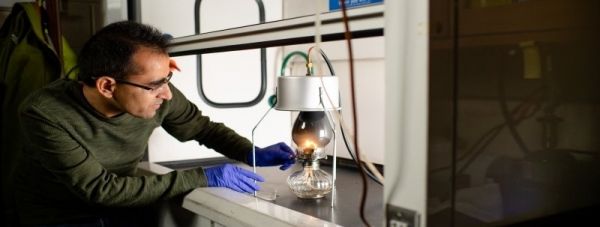When carbon burns — whether it’s the charcoal on your barbeque or from a forest fire — soot is released into the atmosphere. But what goes up must come down, so what happens to soot?
When soot particles are “cloud processed” they become more compact. The particles are incorporated into cloud droplets, which leads to the water condensing and evaporating as the droplet moves higher or lower in the atmosphere. Soot that is very compact has traveled far and through clouds, which affects the particles’ optical, aerodynamic and surface properties.
To more fully understand how soot particles change in the atmosphere, researchers at Michigan Technological University used the University’s cloud chamber to simulate conditions similar to those observed at the Pico Mountain Observatory in the Azores, the Po Valley in Italy, the foothills of the Sierra Nevada mountains, the brick-making Bhaktapur region of Nepal and Mexico City.
Janarjan Bhandari, a postdoctoral researcher in Atmospheric Sciences, Claudio Mazzoleni, professor of physics, and collaborators recently published their findings in the journal Scientific Reports, part of the Nature family of publications.
Continue reading at Michigan Technological University
Image via Michigan Technological University


